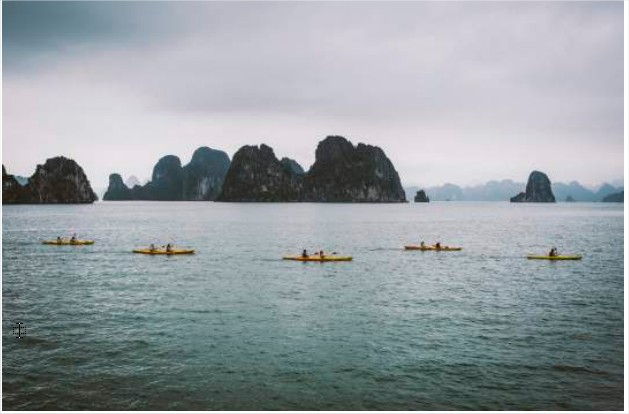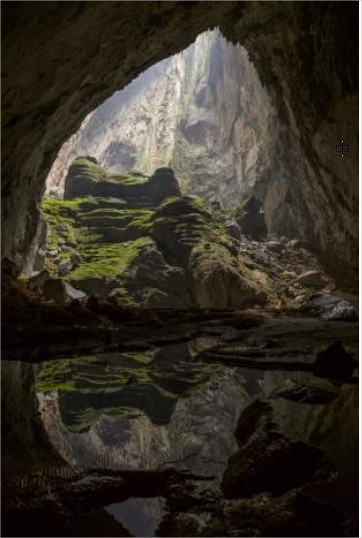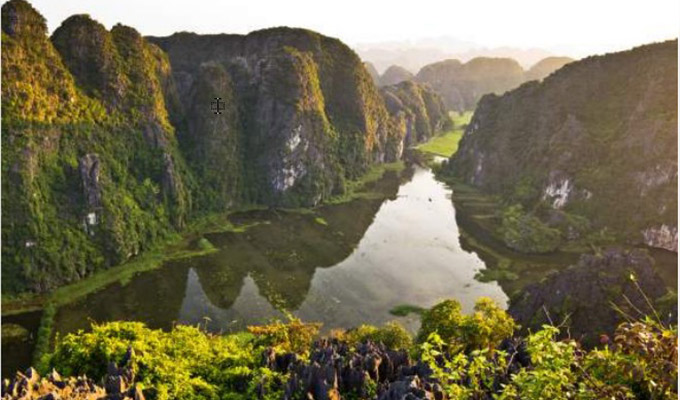In an era where CGI reigns supreme in Hollywood, there are few places left in the world that are able to jar the senses the way computer generated imagery does. Which is why, when Warner Bros. first released the trailer for the long-awaited Kong: Skull Island, viewers marveled at the use of real world locales to bring to life the mythical lair of the mighty and terrifying Kong.
The second installment of Legendary’s MonsterVerse franchise is a departure from the classic caricature of Kong scaling the Empire State Building, and instead returns to the uncharted island inhabited by the king of the apes. The fictional Skull Island is a composite of sublime filming locations featuring the pristine shorelines of Australia, Hawaii’s rugged rainforests, and one of the last explored frontiers in the world: Vietnam. Vietnam’s visual tone easily evinces the possibility of a fearful, fantastical world dominated by primeval creatures. If the spirit of adventure is calling, look no further. Here’s a map to plan your own monster-sized expedition of Vietnam.
Ha Long Bay
Ha Long, meaning “where the dragon descends into the sea,” is a mystical destination entrenched in its own folklore. Legend has it that long ago, the Jade Emperor called forth a family of dragons from the heavens to drive off an impending invasion. The dragons rained down thousands of emerald gemstones onto the bay, giving birth to over 1,900 majestic limestone outcrops rising spectacularly from the tranquil calm of the Gulf of Tonkin. Cast off in a charming junkboat and weave through the towering monoliths that whisper secrets of a time long forgotten, to the far reaches of the inlet where hidden coves and lagoons await. When the mist rolls in, the ragged jungle-infested crags and bluffs of various shapes and sizes are said to play tricks on the mind. Who knows what, or who, could be lurking in the haze…

Quang Binh
One approach to convincing an audience that a fictional destination does indeed exist is to film a place never before seen on the big screen. Quang Binh, a province in Northern Vietnam bordered flanked by Laos to the west and The East Sea, slipped under the radar for years before the accidental discovery of Han Son Doong, the world’s largest cave system in volume, back in 1991.
Since then, Quang Binh has seen a steady rise of adventurists looking to experience this largely concealed territory for themselves. While Han Son Doong may have put Quang Binh on the map, the caves of this UNESCO World Heritage site are just one of the countless opportunities to behold the most stunning displays of Mother Nature’s handiwork. The richness in landscape above ground rivals that of the subterranean biospheres hiding below. Karst mounts shrouded in mist and covered in tangles of tropical of rainforest are home to many varieties of flora and fauna, with new species being identified each year.

Ninh Binh
The serrated landscape of Ninh Binh is a character in itself. Often referred to as “Ha Long among the rice paddies,” this cinematic sweep of verdant countryside is the home to a pocket of limestone formations springing out of the earth like some divine fortress. Ninh Binh is home to the popular Tam Coc, a flooded cave karst system that is part of the larger Trang An Scenic Landscape Complex. The inconstant rhythm of rolling hills and mountains is evened off by the graceful bends of the Ngo Dong River, which glistens a brilliant ochre hue in the sunlight. You will be able to appreciate the colour bending ways of the Ngo Dong from the inside of a bamboo sampan, ferrying you through the shadows of these limestone giants. The uncorrupted, terrifying beauty of the terrain lends itself to the primordial world of Kong.

About The Author
A Bostonian by way of the Philippines, Izzy Pulido is an avid collector of first-time experiences. She is the host of Street Feast Vietnam, a food-centric web series and regularly contributes to Vietcetera, a reative consortium about Vietnam. Find her musings on wayfaring over at thenextsomewhere.com. |
Related news
- The Reel Vietnam